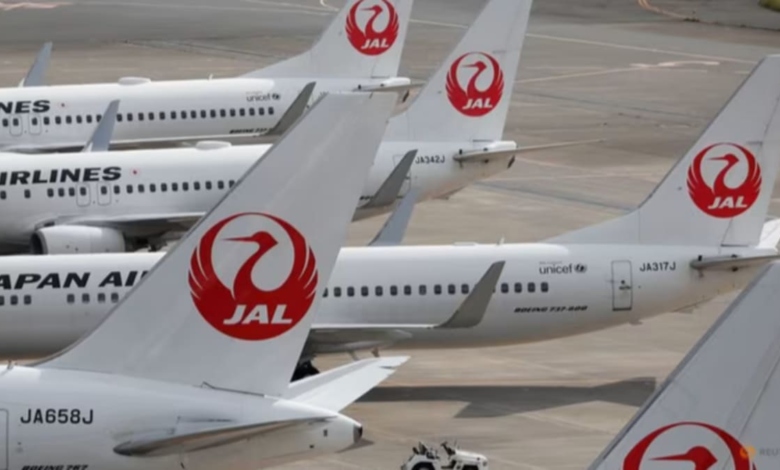Weak yen a double-edged sword for Japan Airlines as inbound travel soars, outbound demand dips

RECORD INTERNATIONAL VISITORS
While the weak yen has made vacations abroad more expensive for people in Japan, it has sweetened travel deals for tourists visiting the land of the rising sun.
Japan welcomed more than 3 million visitors in March, a record-breaking high for a single month, driven by the nation’s scenic cherry blossom season. Most tourists were from North America and Asia, said Mr Leggett.
The surge in international passengers propelled a stunning turnaround in revenues and earnings last year for JAL from pre-pandemic 2019 levels, with its revenue soaring about 20 per cent year-on-year.
During the summit, JAL announced a code-share deal with Indian budget carrier IndiGo to sell tickets on each other’s flights.
This will allow the Japanese carrier to expand its network to 18 destinations on IndiGo’s network, including New Delhi and Bengaluru. India’s air travel market is currently the third biggest in the world, after China and the US.
CHINESE MARKET CONCERNS
While JAL’s outbound flights to Thailand, Taiwan and South Korea have increased – in line with heightened international demand – Mr Leggett said the Chinese market remains depressed.
Traffic both ways are at just half of pre-pandemic numbers, and the airline has adjusted its schedule and capacity to cope with the lukewarm interest, he added.
He said the dampened appetite for travel is due to the economic downturn and the visa application process – Japanese citizens now need a visa to enter China, unlike before the pandemic, when they could visit China without a visa for up to 14 days.
“For the Chinese (not) coming to Japan, it’s probably more economic reasons than anything else with the slowdown of the economy in China,” he said. “For Japan, travel in general is not as strong as it used to be.”
For its premium first and business class segments, while international flights have seen strong demand, domestic business travel has levelled off at about 80 per cent compared to pre-pandemic numbers.
“I think that’s mainly due to remote working – online meetings that are replacing face-to-face meetings. The 80 per cent level has been there for the last two years and it doesn’t seem to be changing. Leisure travel makes up for that a little bit, but that’s our biggest concern,” he said.


 Play with Welcome Bonus Up to 300%
Play with Welcome Bonus Up to 300%